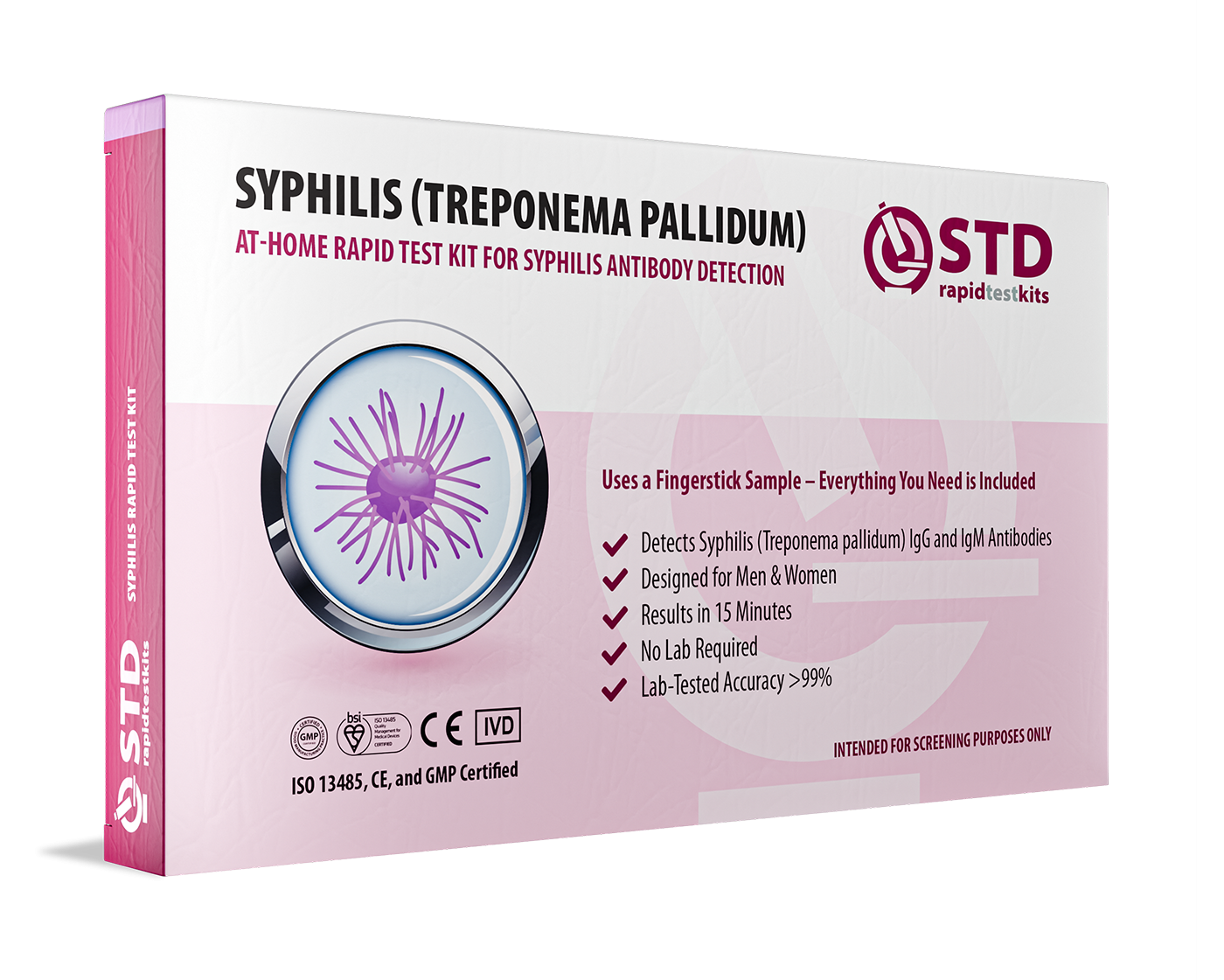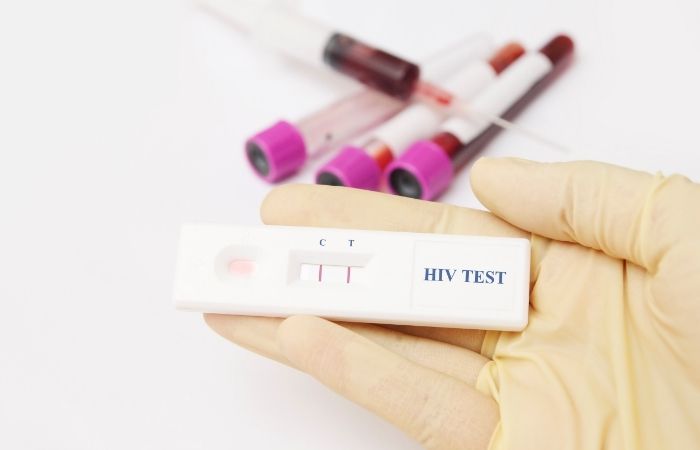Co-Infection Risks: The Hidden Link Between STDs and HIV
Unlike the younger generations, who were brought up with STD prevention sex education, older people lived through a time when contraception was about preventing pregnancy, not disease. They were also in long-term monogamous relationships where STDs were not an issue, and they were thus not used to condoms later in life. Stigma around older sexuality also muffles the discussion that could keep people healthy.
This piece explores the covert spread of STDs in older adults, the myths surrounding it, and how you or your loved ones can stay safe.
The Underrated STD Pandemic in Older Adults
While sexual health discussions within the mainstream circle may predominantly be about young adults, recent statistics indicate that STDs in the elderly are on an all-time high. In fact, the CDC's 2022 STD Surveillance Report found that:
- Syphilis incidence among adults aged 55 and older grew 75% during the last ten years.
- Gonorrhea infections among those aged 60 and older doubled between 2015 and 2020.
- Chlamydia infection incidence among older people grew by 31% within five years.
But why are these things happening? There are a few top factors contributing to this surge:

Increased Life Expectancy and Active Sexual Lives
Because of advances in health care, people live longer, more healthy lives, and that includes sustained active sex lives well into the years. Medications for erectile dysfunction such as Viagra and Cialis have further enabled older individuals to stay sexually active, but safe sex communication hasn't kept as up-to-date.
Older Adult Online Dating
Senior-focused dating websites and apps, such as SilverSingles and OurTime, have made it possible for older adults to meet and form new relationships. However, the majority of seniors who engage in new relationships are not accustomed to STD screening protocols, thereby allowing infections to remain undetected and be transmitted unintentionally.
Lack of Proper Education and Routine Screening
Few of the older people were ever instructed with current sex education and are unaware that they must be tested for STDs regularly. In 2018, the Journal of Sex Research published research indicating that only 13% of sexually active older adults had been tested for an STD in the previous year.
Check Your STD Status in Minutes
Test at Home with Remedium7-in-1 STD Test Kit

 For Men & Women
For Men & Women Results in Minutes
Results in Minutes No Lab Needed
No Lab Needed Private & Discreet
Private & DiscreetOrder Now $129.00 $343.00
For all 7 tests
Key Risks and Misconceptions About STDs in Older Adults
Most older adults feel they are not at risk for STDs and thus engage in unsafe acts. Some of the most prevalent myths contributing to the issue are as follows:
"I Can't Get an STD at My Age"
Most people think that STDs happen only to young people. The truth is that any sexually active individual can get an STD, irrespective of age.
"I Don't Need a Condom, I Can't Get Pregnant"
For the majority, condoms were only used for birth control, not for preventing infection. Result? Older adults often forgo condoms, thinking they're no longer necessary.
"If I Had an STD, I'd Know"
The majority of STDs have no symptoms, so the individual can bear and spread an infection without realizing it.
"Doctors Don't Talk About STDs with Seniors"
Most health professionals believe that their older patients are not sexually active and, as a result, do not offer them routine STD testing, and they miss diagnoses in older adults.

How to Stay Safe – Solutions for Older Adults
Now that we know the risks, how can we avoid STDs in older adults?
- Start the Conversation: Seniors should be truthful to their partner about past sexual health and get tested together before initiating new relationships.
- Get Regular STD Tests: Regular STD testing is recommended by the CDC for sexually active adults. If visiting clinics is not welcome, seniors can opt for home STD test kits, which are discreet and convenient.
- Practice Protection: Condoms and dental dams reduce the spread of STDs and should be used even with advanced age. Condoms and other contraceptive methods are available free or at low cost at most pharmacies and health clinics.
- Ask for Medical Guidance: Physicians need to take a proactive role to offer STD testing to older adults, but if they do not, patients should request them.
Statistical Insights and Case Studies
The Numbers Speak: STDs Among Older Adults Are Increasing
Multiple studies corroborate the astonishing surge in STDs among seniors:
- A CDC study in 2021 concluded that STDs in Americans over the age of 65 increased by 87% over the last decade.
- The British Medical Journal (BMJ) published a report in 2019 indicating that STIs in persons over the age of 50 doubled between the years 2008 and 2018.
- A University of Chicago study found that more than 50% of seniors diagnosed with an STD had been in a new relationship after a long period of being single.
These facts are indicative of a dire need for awareness and testing, yet many seniors don't see the doctor until problems arise.
Case Study: The Nursing Home Outbreak
In 2019, a syphilis outbreak was recorded by a Florida nursing home when a resident with undiagnosed syphilis infection inadvertently infected multiple of her partners. Because no one was screened for STDs, there were many cases that were not diagnosed until symptoms had set in. This brought attention to the necessity of giving assisted living facilities and retirement communities better sexual health education and regular STD screening.
Check Your STD Status in Minutes
Test at Home with RemediumSyphilis Test Kit

 For Men & Women
For Men & Women Results in Minutes
Results in Minutes No Lab Needed
No Lab Needed Private & Discreet
Private & DiscreetOrder Now $33.99 $49.00
Case Study: The Online Dating Experience
Once her husband died, Linda, 67, ventured back to the dating world through a senior's dating app. She got herself a charming boyfriend, and after a few months, they became intimate. Not knowing the risks, she did not inquire about STD history and did not practice protection. A check-up some months later discovered that she had a gonorrhea infection. Linda was surprised, as she never thought STDs were a risk at her age. Her doctor explained to her that the majority of elderly people believe they're safe, and that's one of the reasons infection rates are rising.
The lesson: Regular testing and open talk about sex lives is essential, at any age.
Specialist Opinions Regarding STDs Among Older People
Doctors Ring the Alarm
Doctors stress educating older people on sexual health:
Dr. Karen Mitchell, a specialist in infectious diseases, says:
"Most older people acquired information about STDs in a nonformal way. Physicians need to make STD testing for older patients routine, as they do for younger adults."
A 2020 Journal of Aging & Health study found, though, that 78% of physicians never ask their older patients about sexual activity or risk for STDs unless the patient brings it up themselves.
This resistance causes most STDs to go undiagnosed for years, raising the risks of severe health outcomes like infertility, organ damage, and even dementia in syphilis without treatment.
What Healthcare Providers Can Do
- Regular Screening for Older Adults: Doctors must recommend STD screening to sexually active older adults just as they would to younger patients.
- Reducing the Stigma: Senior sexuality and protected sex habits need to be talked about openly and become routine during check-ups.
- Increasing At-Home Testing: Most seniors are too embarrassed to talk about STDs, at-home testing kits offer a discreet, convenient option.

Misconceptions About STDs in Older Adults
- "Only Young People Get STDs"
- Fact: STDs don't discriminate by age. Anyone who is sexually active, at any age, can become infected.
- "If I Had an STD, I'd Have Symptoms"
- Reality: The majority of STDs are asymptomatic for years or months, leading to accidental transmission.
- "Doctors Would Tell Me If I Needed to Get Tested"
- Reality: Doctors don't test older adults for STDs on a regular basis, patients must ask for testing themselves.
- "Condoms Are Only for Birth Control"
- Reality: Condoms are the most effective way to reduce the risk of syphilis, gonorrhea, chlamydia, and HIV.
FAQs
1. Why are STD rates rising among older adults?
STDs in the elderly are rising due to increased life expectancy, active sexual life, online dating, and ignorance of STD prevention.
2. Does the older adult require regular STD testing?
Yes! Regular STD testing is recommended by the CDC for all sexually active individuals regardless of age.
3. Are STD symptoms in older adults different?
Yes, some older people do experience milder symptoms or mistake STD symptoms for age issues, such as fatigue or arthritis.
4. Is it possible to get infected with an STD if I am in a monogamous relationship?
If the other individual has ever been infected and not tested, they can unknowingly transmit an STD years later.
5. Can STDs be treated at any age?
Most bacterial infections are treatable with antibiotics (chlamydia, gonorrhea, syphilis). However, viral infections (HIV, herpes, HPV) must be managed for life.
6. In what ways can older persons most effectively prevent STDs?
- Use condoms
- Have regular testing
- Discuss with partners
- Use home STD test kits for ease of use and discretion
7. Can I use home STD test kits if I am over age 60?
Certainly! Home STD test kits are available to anyone, young or old, and offer a convenient, discreet method of testing for infection.
8. Do retirement communities have higher STD rates?
Yes, STDs in retirement centers have grown over the past few years due to excessive socialization and ignorance.
9. How can doctors better promote older people's sexual well-being?
Doctors should ask regularly about sex, offer STD screening, and give patients prevention advice.
10. Is it embarrassing to ask for an STD test as a senior?
Not at all! Sexual health is part of overall well-being, and testing is an adult decision at any age.

Protecting Senior Sexual Health
STDs are not a young person's issue. The growing number of STDs among seniors is a new public health concern, but it can be avoided.
STDs do not have an expiration date. If you or your partner are sexually active, take charge of your health, get tested on a regular basis, talk to your doctor, and consider in-home STD test kits for convenience and discretion. Your health is yours to control!
Sources
1.- With STIs on the Rise Among Older Adults, Here's What Doctors Can Do
2.- Older Adults Are at Growing Risk for Sexually Transmitted Infections
3.- Managing the Rise in STIs Among Older Adults
5.- STD Cases Rose 5% from 2020 to 2023, with Biggest Jumps Among Older Adults, Data Show
6.- Sexually Transmitted Infections Pose New Threat to Aging Adults










